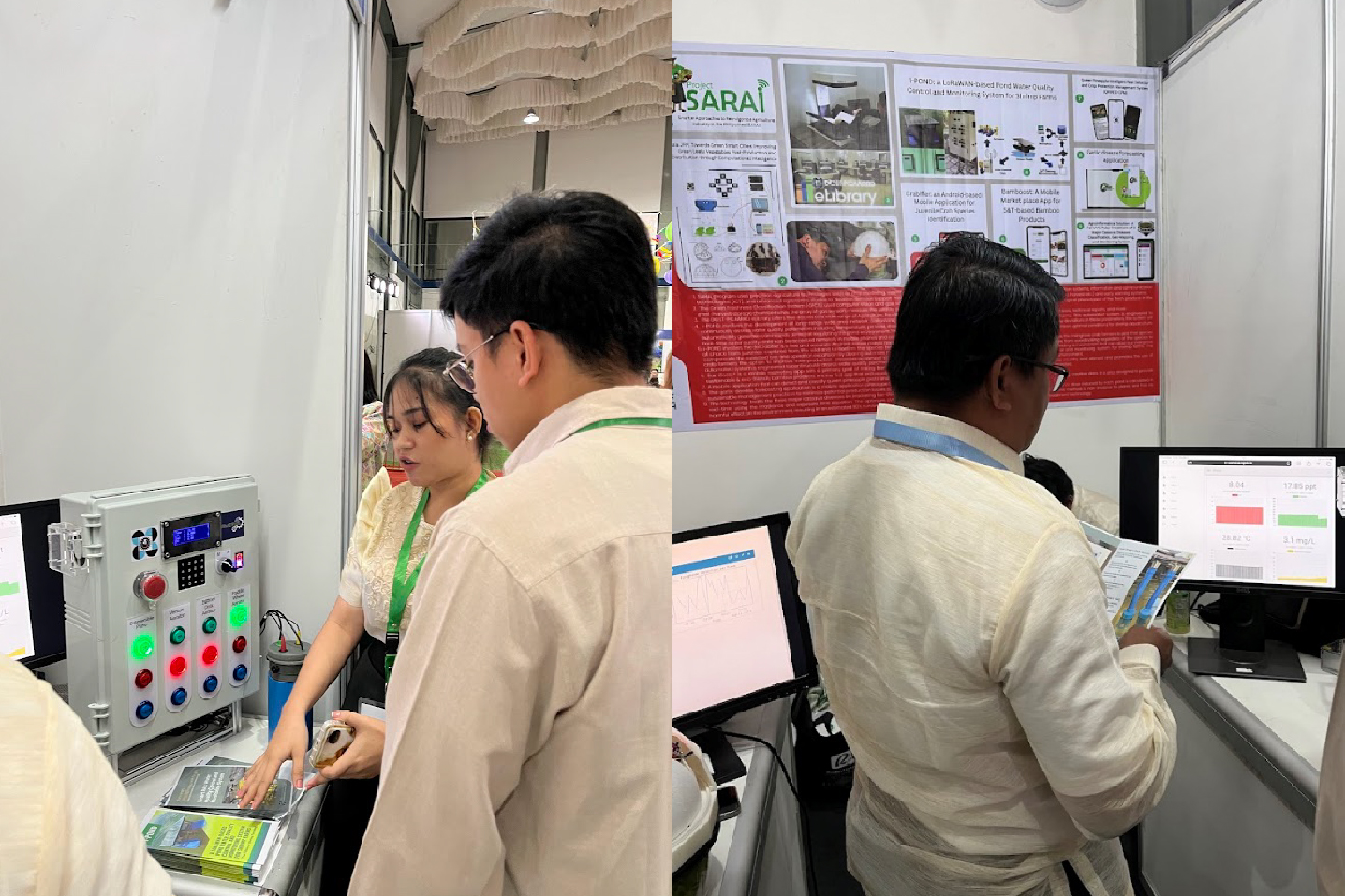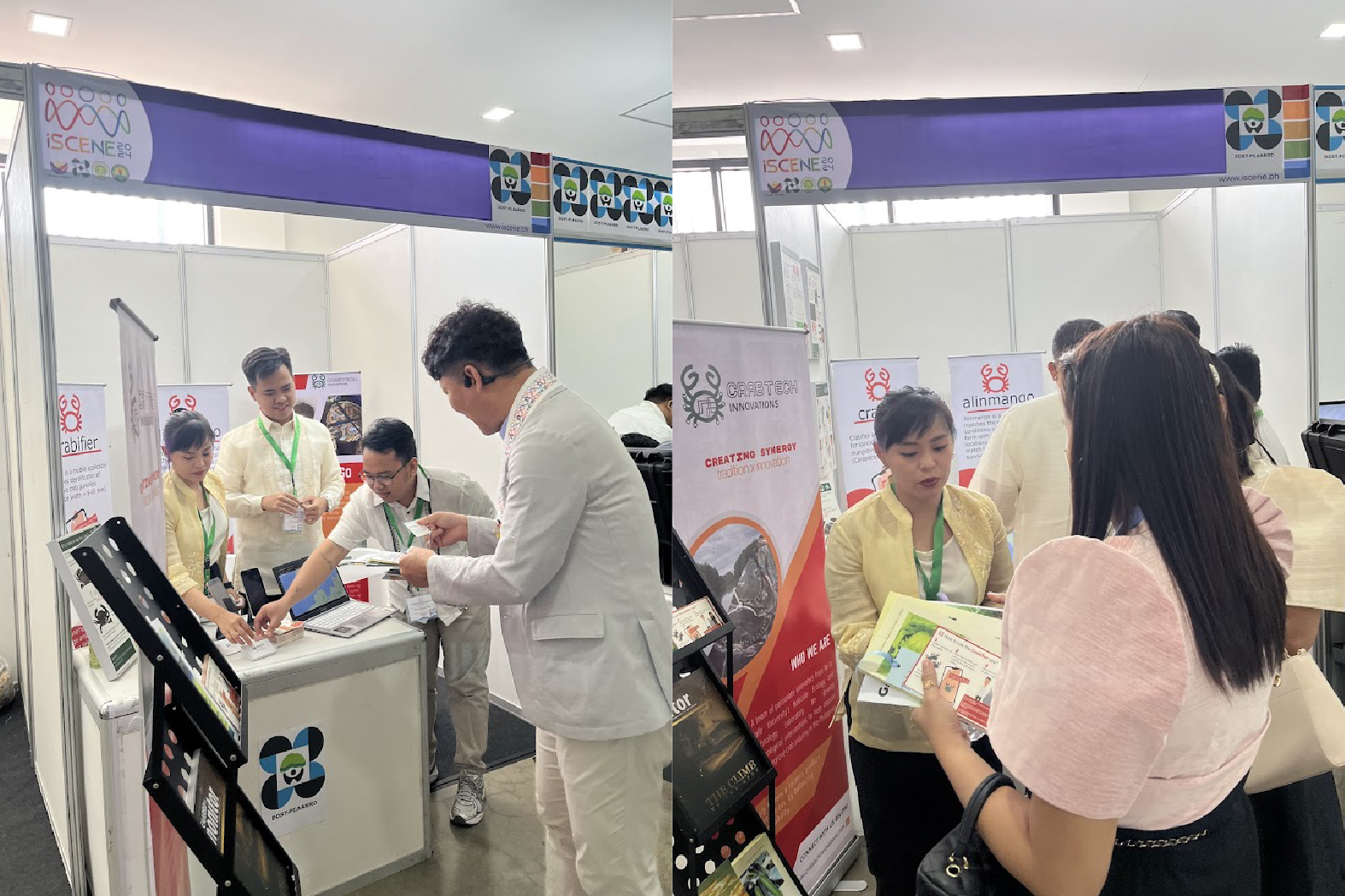Did you know that a technology that primarily addresses the existing challenges in maintaining good water quality in shrimp ponds has already been developed?
The Metals Industry Research and Development Center of the Department of Science and Technology (DOST-MIRDC) and industry partner Aqua Tierra Agri-Industrial Farms Inc. developed the technology, i-POND: a Long-Range Wide Area Network (LoRaWAN)-based water quality control and monitoring system.

Participants during iSCENE 2024 inquiring about the iPOND technology. (Image credit: IARRD, DOST-PCAARRD)
iPOND was already tested in three shrimp grow-out cycles. Researchers collected real-time pH, dissolved oxygen, humidity, and temperature data that can be monitored through laptops, personal computers, and mobile phones. The technology aimed to improve the farm’s water quality monitoring system and result in an overall increase in productivity.
From manually monitoring and visiting the pond three times, data gathering using hand-held measuring kits on different pond spots, and identifying any water quality issue, the technology can now allow farm technicians to monitor the pond’s water quality remotely as long as an internet connection is available. These efforts are expected to aid aquaculture sustainability, minimizing resource wastage and reducing manual labor.
The technology was an output of the project, “i-POND: A LoRaWAN-based Pond Water Quality Control and Monitoring System for Shrimp Farms," which was monitored by the Philippine Council for Agriculture, Aquatic and Natural Resources Research and Development (DOST-PCAARRD).
Meanwhile, mangrove crab farming has also climbed the technology ladder. De La Salle University developed an Android-based mobile application for juvenile crab species identification called the Crabifier.

De La Salle University project team discussing the Crabifier mobile application to interested participants at iSCENE 2024. (Image credit: IARRD, DOST-PCAARRD)
DOST-PCAARRD funded the project, “Harnessing Emerging Technologies for Mangrove Crab Culture and Resource Management: 'Omics Approaches, Web-based and Mobile Computing Technologies,” which has created the Crabifier.
Crabifier is a free and accurate Android-based mobile application that can identify the species of juvenile crablets of the genus Scylla. It allows mangrove crab farmers to pick their chosen species from juveniles captured from the wild and to ensure the authenticity of species sold by the traders.
Traditionally, fishermen and traders rely on visual features such as claws, width, and size of the carapace (thick part covering the body of the crab), and color to identify juvenile mangrove crabs. Some regions also consider behavior patterns, carapace texture, weight gain rate, and seasonality. The manual identification of crablets typically takes 3–4 hours per day, which adds significant time to the sorting process.
With the Crabifier, the identification of crab species for fishermen can now be streamlined. It helps them save time, minimize losses, and avoid potential fraudulent practices by verifying the crab species being sold.
These technologies were featured at the International Smart and Sustainable Cities and Communities Exposition and Networking Engagement (iSCENE 2024) in Cauayan City, Isabela last April 11–13, 2024. The iSCENE 2024 was an avenue for key players in the government, industries, and academic institutions to explore opportunities to build and pave the way for smart and sustainable communities.
Highlighting the importance of science-based solutions and innovations, DOST-PCAARRD ensures that these technologies were built and designed to tend to the needs of the industry. The i-POND and Crabifier were two of the agency’s many efforts toward enabling smarter and sustainable practices in aquaculture for the future.

